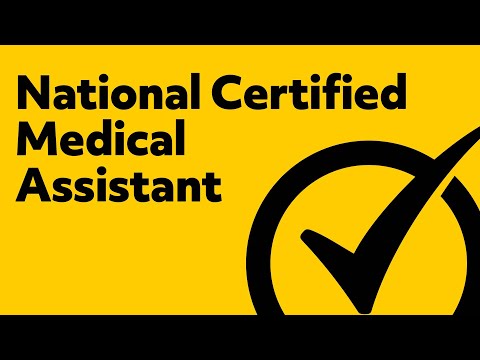How to Get On-the-Job Training as a Medical Assistant
Contents
- What is a Medical Assistant?
- Duties of a Medical Assistant
- Education and Training Requirements
- How to Get On-The-Job Training
- Certification and Licensure
- Salary and Job Outlook
- Pros and Cons of Being a Medical Assistant
- What to Expect as a Medical Assistant
- 10 Tips for Succeeding as a Medical Assistant
- FAQs About Medical Assisting
How to Get On-the-Job Training as a medical assistant Many medical assisting programs offer on-the-job training opportunities. Here’s how to find a program that’s right for you.
Checkout this video:
What is a Medical Assistant?
Medical assistants are versatile health care professionals who work alongside physicians and other health care staff to provide care to patients. Though the job duties of medical assistants vary from state to state and from facility to facility, they often include tasks such as taking medical histories, recording vital signs, drawing blood, preparing patients for examination, and giving injections. Some medical assistants also take on administrative duties such as scheduling appointments, handling billing and insurance claims, and coding medical records
The best way to learn the skills necessary to become a medical assistant is on-the-job training. Many employers will provide on-the-job training to new employees, often lasting several weeks or months. However, if you are interested in becoming a medical assistant, it is a good idea to have some prior experience in the health care field. This can be anything from working as a receptionist in a doctor’s office or hospital to volunteering in a clinic or other health care facility. Having this prior experience will give you an idea of what the job of a medical assistant entails and will make you a more attractive candidate to potential employers.
In addition to on-the-job training, many employers also require that medical assistants complete a formal education program. These programs are typically offered at community colleges and technical schools, and they usually take about one year to complete. During your education, you will take classes such as anatomy and physiology, Medical Terminology office procedures, and computer applications. You may also have the opportunity to participate in an externship, which is a hands-on training program that gives you the chance to apply the skills you have learned in a real-world setting.
Once you have completed your formal education and on-the-job training, you will be ready to sit for the Certified Medical Assistant (CMA) exam administered by the American Association of Medical Assistants (AAMA). Passing this exam will give you the credential of Registered Medical Assistant (RMA), which will show potential employers that you have the knowledge and skills necessary to be successful in this field.
Duties of a Medical Assistant
Most medical assistants have on-the-job training that lasts about four to twelve weeks. Some community colleges offer certificate or diploma programs that can last up to a year. These programs typically include classroom and laboratory instruction in anatomy, physiology, medical terminology, administrative office procedures, and insurance billing and coding. Some programs also include an externship, which gives students the opportunity to get hands-on experience in a real medical setting.
Those who have completed a formal educational program generally find it easier to find a job and earn a higher salary than those who have not. However, many employers are willing to train qualified applicants with no previous experience. Medical assistants typically perform the following duties:
Answering phones
Scheduling appointments
Preparing patients for examinations
Taking and recording vital signs
Collecting and processing lab specimens
Assisting with procedures
Instructing patients on medication and diet
Performing basic office duties
Maintaining medical records
Education and Training Requirements
Education and Training Requirements
Most medical assistants have postsecondary education such as a certificate, although some have an associate’s degree. Certificate programs typically take 1 year or less to complete and are available from many community colleges, technical schools, and vocational schools. Associate’s degree programs in medical assisting usually take 2 years to complete.
How to Get On-The-Job Training
There are a few ways to get on-the-job training as a medical assistant. One way is to find a medical facility that offers training programs. Training programs are usually set up so that you can work and learn at the same time. This can be a great way to get your foot in the door at a hospital or clinic, and it also allows you to learn while you earn.
Another way to get on-the-job training is to look for an internship program. Internship programs are often offered by hospitals and clinics, and they provide you with the opportunity to learn about the medical field while working at a facility. These programs usually last for a few months, and they can be a great way to get experience in the medical field.
If you know someone who works as a medical assistant, you may also be able to get on-the-job training from them. Many medical assistants are willing to train new employees, and this can be a great way to learn about the job. You may also be able to find on-the-job training through online courses or by attending training seminars.
Certification and Licensure
There are many ways to become a certified medical assistant. The most common way is to complete an accredited program and pass the certification exam administered by the American Association of Medical Assistants (AAMA). Alternatively, you can attend a school that offers a certificate or diploma in medical assisting, which generally takes one year or less to complete. You can also complete a two-year associate’s degree in medical assisting. If you already have a bachelor’s degree, you can attend a one-year post-baccalaureate medical assisting program. Finally, some states offer on-the-job training programs for medical assistants.
Once you have completed your training, you will need to obtain a license if your state requires it. In some states, certification and licensure are the same thing. In other states, certification is voluntary but licensure is required. To find out if your state requires licensure, contact your state’s licensing board.
Salary and Job Outlook
As of May 2019, the median annual salary for medical assistants was $34,800, according to the U.S. Bureau of Labor Statistics (BLS). The top 10% of earners made more than $49,100, while the bottom 10% made less than $24,280.
During the 2018-2028 decade, employment of medical assistants is projected to grow by 29%, much faster than the average for all occupations (5%), according to the BLS. The aging baby-boomer population and their demand for health care services will fuel this growth.
Pros and Cons of Being a Medical Assistant
The healthcare field is one of the few places where you can get on-the-job training and be paid for it. Medical assistants are in demand and the job outlook is good, but there are some pros and cons to consider before you decide if this career is right for you.
Pros:
-You can get started without completing a formal education program
-You will receive on-the-job training from a qualified medical professional
-Medical assistants are in high demand, so job security is good
-The salary for medical assistants is relatively high, especially considering the level of training required
Cons:
-The hours can be long and irregular, especially if you work in a hospital setting
-The work can be emotionally demanding, as you will be dealing with sick patients on a daily basis
-There is a lot of responsibility involved in the job, and mistakes could have serious consequences
What to Expect as a Medical Assistant
As a medical assistant, you will be responsible for a variety of tasks to support the work of physicians and other medical professionals. You will need to be able to handle both clerical and clinical duties, and you will need to be comfortable working with patients of all ages.
The duties of a medical assistant can vary depending on the size and type of medical practice where they are employed. In a small practice, a medical assistant may be responsible for all aspects of the office, including greeting patients, scheduling appointments, billing, and coding insurance forms. In a larger practice, they may specialize in one area, such as working primarily in the laboratory or assisting with surgeries. No matter what their specific duties are, all medical assistants must have excellent customer service skills and be able to work well under pressure.
If you are interested in becoming a medical assistant, there are several ways to get the training you need. Many community colleges and technical schools offer certificate or diploma programs that can be completed in as little as one year. These programs will give you the basic knowledge and skills you need to excel in this field. If you are looking for more advanced training, there are also associate’s degree programs available that typically take two years to complete.
Once you have completed your training, you will need to obtain certification from an accredited organization before you can begin working as a medical assistant. The American Association of Medical Assistants (AAMA) offers the Certified Medical Assistant (CMA) credential, which is nationally recognized and respected by employers. To earn this credential, you will need to pass an exam that covers both clinical and administrative topics.
If you are interested in a career as a medical assistant, there are many opportunities available for those with the necessary training and certification. With the aging population in the United States the demand for qualified medical assistants is expected to grow significantly in the coming years. This is an excellent career choice for those who want to work in healthcare but don’t have the time or money to pursue a traditional four-year degree program.
10 Tips for Succeeding as a Medical Assistant
Medical assisting is one of the fastest-growing careers in the United States, with an expected growth rate of 29% from 2016 to 2026, according to the Bureau of Labor Statistics. If you’re looking for a career in healthcare, becoming a medical assistant is a great option.
Medical assistants perform a variety of administrative and clinical tasks to support the work of physicians and other health professionals. They are often the first point of contact for patients and play an important role in providing quality patient care.
While most medical assistants have at least some formal education, on-the-job training is also an important part of becoming a successful medical assistant. Here are 10 tips for succeeding as a medical assistant:
1. Be detail oriented. Medical assistants must be able to keep track of multiple tasks and deadlines. Paying attention to detail is essential for ensuring that patients receive the correct treatments and medications.
2. Be organized. Medical assistants must be able to organize their time and work space efficiently. This includes maintaining accurate patient records and keeping track of supplies.
3. Be able to multitask. Medical assistants often have to juggle multiple tasks at once. Being able to multitask effectively is essential for ensuring that all tasks are completed in a timely manner.
4. Be proficient in technology. Medical assistants must be proficient in using a variety of computer software programs, including scheduling software, Electronic Health Records (EHR) systems, and word processing programs.
5 possess excellent communication skills 5.. Medical assistants must be able to communicate effectively with patients, families, physicians, and other members of the healthcare team. This includes being able to provide clear instructions and updates on patients’ conditions or treatments.. Excellent written communication skills are also important for creating accurate patient records.. 6 have strong customer service skills 6.. Good customer service skills are essential for interacting with patients and their families.. 7 be able to work well under pressure 7.. Working in the healthcare industry can be stressful at times.. Medical assistants must be able to remain calm under pressure and handle stressful situations effectively.. 8 display empathy 8.. Being able to empathize with patients and their families is an important part of providing quality patient care.. 9 possess strong critical thinking skills 9..Medical assistants often have to make decisions quickly in order to provide the best possible care for patients.. Strong critical thinking skills are essential for making sound decisions in difficult situations.. 10 maintain a positive attitude 10..It’s important for medical assistants to maintain a positive attitude while working long hours or dealing with difficult situations.. A positive attitude can help put patients at ease and make them more likely to follow treatment plans or follow up with appointments after they leave the office…
FAQs About Medical Assisting
If you’re thinking about a career in medical assisting, you probably have a lot of questions. How much does medical assistant training cost? What kind of job can I get after I graduate? Do I need to be certified? Here are answers to some of the most frequently asked questions about medical assisting.
How much does medical assistant training cost?
The cost of medical assistant training varies depending on the type of program you choose. There are both certificate and associate degree programs available, and the length of the program also affects the cost. In general, you can expect to pay between $1,000 and $5,000 for medical assistant training.
What kind of job can I get after I graduate?
Most graduates find entry-level positions in doctor’s offices, clinics or hospitals. With experience, you may be able to advance to a position such as office manager or lead medical assistant.
Do I need to be certified?
While certification is not required in all states, it may give you an advantage when you’re looking for a job. Most employers prefer to hire certified medical assistants, and some positions may require certification.







